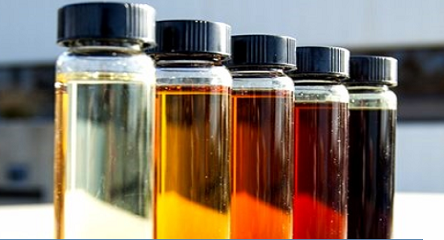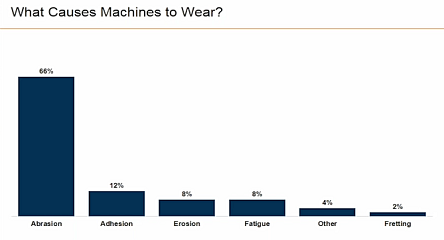Case Studies and Stories
Point of Care Oil Analysis Makes Sense
The 2020 calendar year has certainly brought with it many challenges for a variety of industries. The medical field, pulp and paper industry and food supply chain have all been significantly impacted by the unprecedented COVID-19 pandemic. At the grocery store, people experienced (or are still experiencing) empty shelves, limited food supply and less variety when doing weekly shopping. In March 2020, grocery and supply sales increased 29% from the previous year (3).
With this significant change to everyone’s daily lives, people immediately assumed the nation’s food supply must be low, which led to panic buying and hoarding, thus, escalating the problem. The root cause of the problem, however, had very little to do with limited food supply and more to do with global supply chains being shut down around the world due to COVID-19.
This lockdown lead to massive shifts in production and packaging methods, and major delays getting the final products on the shelves. With grocery stores already operating at “just in time” inventory levels even prepandemic, the strains on the global grocery supply chain due to COVID-19 became all too apparent. Product demand became so high that many production facilities did not have the luxury of taking equipment offline for maintenance. In fact, most machines were operating at full capacity. With machines experiencing minimal to zero downtime, predictive maintenance strategies not only became a competitive advantage to corporations, but imperative to company operations. While timely delivery of product is always important, the COVID-19 pandemic made it absolutely critical for Spectro Scientific MiniLab customer and grocery distribution center, ES3.
Headquartered in Keene, New Hampshire, ES3 provides storage and shipping services for grocery items throughout the United States and has facilities located in Iowa, Ohio and Pennsylvania. The flagship facility in York, Pennsylvania, ships to more than 300 grocery stores in the Northeast and provides storage services to more than 50 manufacturing partners. This is one of the largest automated grocery distribution warehouses in the world, with 380,000 pallet storage locations and the capability to ship 5 million cases per week. The York site also holds their in house lubrication laboratory and MiniLab 53, supporting nearly 100 critical assets with expansion always on the horizon. They routinely assess samples of gear oil from the two different auto- mated systems at this site, including enclosed gearboxes and robotic arms.
Time to Bring In-house: Creating the Reliability Culture
In December 2013, Travis Sanderson, the ACP automation manager at ES3, decided to pursue the idea of building a lubrication laboratory onsite. At that time, Sanderson was working closely with many of the robotics and automation compo- nents within the facility.
“We weren’t checking our oils and we weren’t changing them like we should, and it was starting to cost us a lot of money,” he said. “Failures of our machines and our inability to control them were hurting us pretty drastically to the point that it was getting a lot of attention and we needed to find a new strategy of going after it.”
The new strategy included onsite lubricant analysis that focused on quickly understanding the oil condition.

“We proposed the idea of the lubrication laboratory using the MiniLab and we nailed down working on oil integrity and contamination and trying to get it so that within the hour, we can have a sample of where we stand,” said Sanderson. “ES3 is one of the largest automated facilities in the world for distribution of groceries. Every single thing we have in our facility is on a massive scale. With our machines, we have so manyduplicates of everything that if we can’t see the heartbeat of it, the health of it or how well it’s doing, there’s no way we could get ahead of it.” By working with reliability consultants and obtaining certifications through the International Council for Machinery Lubrication (ICML) and the Society of Tribologists and Lubrication Engineers (STLE), ES3 was set up for success when approaching management with this pioneer idea of onsite oil analysis.
Sanderson said that it wasn’t always easy getting that support, but his certifications and learning how to convey his ideas in a way that related to management goals really helped.
“We had to make sure our leaders bought into what we were doing and understood the value behind it,” he said. “Having my certifications helped me be a player in that discussion.”
Soon after, Sanderson began building their lab space, sourcing lab equipment and developing a program for managing their critical assets. At that point, Chris Orr, supervisor of automation reliability, came onboard and started managing the lab process.



“We had to make sure our leaders bought into what we were doing and understood the value behind it.”
– Travis Sanderson, ACP Automation Manager, ES3
Knowledge is Power: Establishing an Oil Analysis Program
Orr’s background in engineering led him into the position, but he admitted that his knowledge about lubrication was lacking prior to his ICML Level I Machinery Lubrication Technician (MLT I) certification.
“Most of my education about the lab and lubrication was completely outside anything related to college. It’s all stuff that you can learn by going and taking a class for a week and passing a test,” said Orr, who now holds MLT I and Level II Laboratory Lubricant Analyst (LLA II) certifications through the ICML.
As the lubrication program started to gain more traction at ES3, Orr was tasked with selecting the right lab tests to run on the machines, setting the alarm limits and deciding when there was a problem with the equipment that needed to be addressed. A tall order, but possible when equipped with the right tools and knowledge.
ES3 was one of the early adopters of the TruVu 360 Fluid Intelligence Software used in conjunction with the MiniLab 53 system. The TruVu 360 software is designed with 31 different component types already programmed into the software with recommended parameters, alarm limits and diagnostic statements. Pairing his oil analysis knowledge with TruVu 360, Orr was able to create rules and alarm sets specifically for their gearboxes by monitoring particle count, wear particles, oxidation levels and total acid number (TAN).
Managing oil changes was one of the biggest challenges, but with the right strategy (and data), ES3 was able to manage it fairly smoothly. ES3 has 38 gearboxes across their cranes, each containing 30-35 gallons of oil. Using the proper oil analysis data, Orr has been able to optimize exactly when they need to change the oil in those gearboxes.
“On our larger gearboxes, the particle count from the LNF is particularly helpful because it helps us determine whether we can just filter the oil and get more life out of it, rather than changing the oil entirely,” said Orr. “We also look at the wear particle analysis. That’s been really helpful for us because we aren’t able to do some of the other wear analysis techniques, but that gives us a quick, easy way of seeing whether there is a potential problem inside that gearbox. Since we send out our gearboxes for rebuild, this is especially helpful to understand if we need to schedule downtime to get the gearbox rebuilt.”
Sharing the Good News
 As the Supervisor of Automation Reliability, Orr also has the responsibility of sharing the data from the lab with his PM technicians, who are extremely interested in learning about the data being gathered and how to apply it to their daily duties. Orr often brings technicians into the lab to show the results of a sample.
As the Supervisor of Automation Reliability, Orr also has the responsibility of sharing the data from the lab with his PM technicians, who are extremely interested in learning about the data being gathered and how to apply it to their daily duties. Orr often brings technicians into the lab to show the results of a sample.
“Each technician, to some degree, has an idea of what we are trying to accomplish here, and they are very interested,” said Orr.
The lubricant analysis process seamlessly fits into the computerized maintenance management system (CMMS) workflow where Orr can process data and issue work orders for his team.
The whole process is very easy, honestly,” he said.
Both Sanderson and Orr truly believe in the power of certifications to help build a strong foundation in lubricant analysis. From there, the foundation allowed for them to convey a compelling story to their management team in support of an onsite lubrication lab at ES3. After the culture was created, it was a matter of putting the knowledge to use and selecting the right tools and people to get the job done. When the crisis hit, Sanderson and Orr successfully implemented their combined education and resources and this, in turn, enabled them to keep ahead of equipment failures, efficiently meet demand and deliver products when they were needed most. Although COVID-19 is still ongoing and impacting the global grocery supply chain, ES3 is well-positioned to ride out the storm. ML

References www.businessinsider.com/ how- long- grocery store-short- ages-supply-chain-disruptions- could-last-2020-4
www.marketwatch.com/ story/coronavirus-pandemic- shows-the-us-food-supply- chain-is-due-for-an-upgrade- experts-say-2020-04-17
www.mckinsey.com/ industries/consumer-pack- aged-goods/our-insights/-food-supply-chain-disrup- tions-and-implications-from- covid-19#
In our changing world, access to real-time information is business critical. On-site oil analysis eliminates the wait associated with sending samples off-site. With immediate actionab le results, equipment maintainers realize lower costs and increased productivity.
Learn more at info.spectrosci.com/pointofcare
Register Here To Read: : Point of Care Oil Analysis Makes Sense
Please complete the form to continue. Your personal information is treated with care and will be handled in accordance with GDPR regulations.






